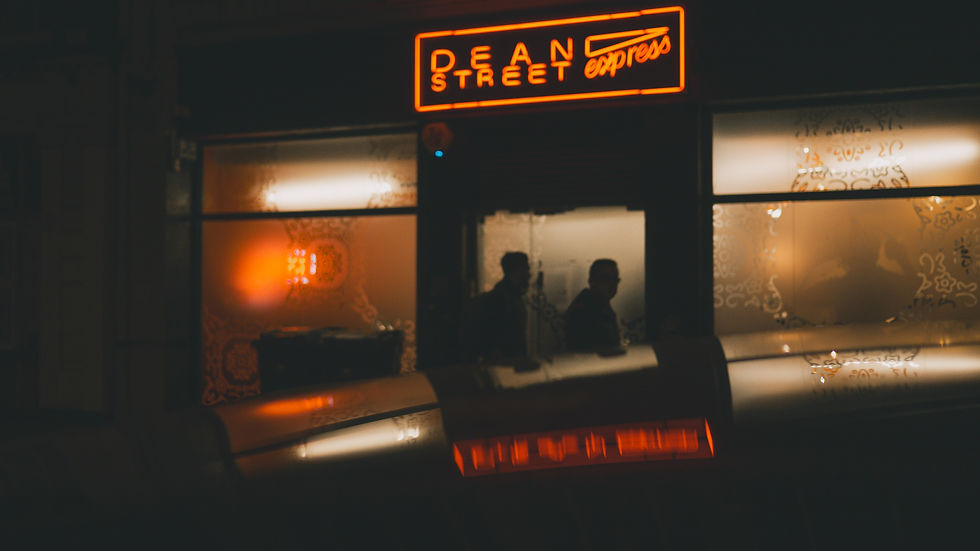Discover the World of Street Photography: A Beginner's Guide
- ronisidhu
- Jan 8
- 3 min read
Updated: May 8
I started my street photography journey in London. Growing up in this vibrant city was full of stories and wonder. I only wish I had started as a kid because London has changed so much over the years. This city continues to evolve from week to week. This moment was crucial. Even though I now shoot in various locations, my work mainly focuses on cities and street photography.
In this blog, I want to discuss why I believe street photography is ideal for beginners. This blog is for those uncertain about what they want to photograph. If you already have a specific goal, this may not be relevant to you.

Use Any Camera, Even Your Smartphone
When we first start, we often blame our gear. We think that if we get a better camera or lens, we will improve. However, in street photography, you can use your phone or a basic point-and-shoot to get started. It might not be the best method, but gear isn't as important in this style of photography. On the other hand, if you choose to begin with arctic wildlife photography, you’ll need to invest much more money. The photos below were taken with a £300 compact camera. The ones below that were captured on my smartphone.





No Special Equipment Needed
Following from the previous point, the most crucial gear for street photography is a good pair of shoes. You’ll be walking long distances, so comfort and avoiding blisters are essential. Street photography doesn’t demand any specific equipment. The story and emotion captured are far more important.

Start Close to Home
Most people live near a major city, making it an excellent starting point. Even if your town seems dull, there's likely a more interesting location within an hour's drive or train ride. While vibrant places like Tokyo and New York can be fascinating, you don’t need to start there. Other photography genres might require travelling far, creating extra barriers to starting out.

Familiarity is Key
I began photographing on the streets of London because it was a familiar setting for me. This familiarity reduced distractions and helped me pick locations. Capturing images in a well-known area positions you for early success. On the contrary, travelling to a new location can add stress as you navigate an unfamiliar environment. Understanding a place well allows you to capture its essence better. Before photography, my knowledge of London was only 5% of what it is now.

Weather is Just a Background Element
If you engage in landscape or astrophotography, weather plays a crucial role. For many photographers, it can determine whether a shot is successful. However, in street photography, while the weather does affect your images, it doesn’t ruin them. Instead, it creates a different atmosphere. You can shoot in any weather, whether it’s sunny, cloudy, foggy, or even snowy. Some of my best photos were taken in harsh conditions.



Embrace Your Mistakes
The points mentioned so far lead to one conclusion—there are few obstacles preventing you from going out and shooting. This allows you to practice more often, leading to quicker failures. With time, you’ll move through mistakes, aha moments, lessons, and wake-up calls faster. This means you can advance as a photographer much more rapidly.
Develop Your Observation Skills
As you navigate bustling streets, you can’t help but notice your surroundings. It’s also crucial for your safety to avoid potential accidents. Over time, you begin to pay attention to small details that may escape others—unique postures, brief moments, colour patterns, good lighting, and unusual subjects. As your observational skills sharpen, you'll start noticing elements that can elevate your photography. If you have the chance to shoot with a more experienced photographer, seize it. You'll quickly learn the importance of being observant. These skills translate not only into photography but into everyday life.

Build People Skills
Street photography doesn’t have to feature people, but if you want to incorporate a human element, you'll need to master the art of interaction. This skill isn’t something you can learn in a classroom. While books like *How to Win Friends & Influence People* can provide insights, true understanding comes from personal experience. You’ll learn to interpret body language, gauge whether you’re welcome, and approach someone for a photo. Furthermore, you’ll develop skills to handle rejection and even resolve conflicts with upset individuals. These aren’t just important photography skills; they’re essential life skills.




Join my newsletter to receive exclusive updates on my captivating photography workshops held in London and across the globe. Don't miss out on this exciting opportunity to enhance your photography skills and explore stunning destinations with like-minded people!




Comments